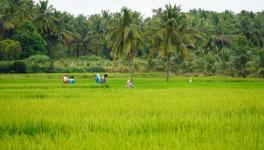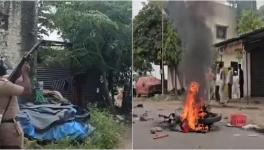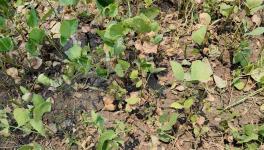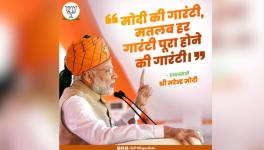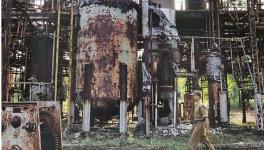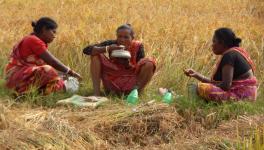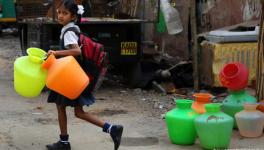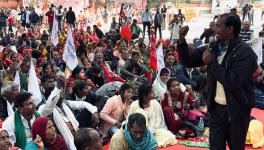Close to 4,000 Madhya Pradesh Villages Stare at Acute Drought
Image for representational use only.Image Courtesy : NDTV
Bhopal: Even before the onset of summer, nearly 4,000 villages are staring at an acute drought in 36 out of 52 districts in Madhya Pradesh.
A lean monsoon last year has left in its trail a grave crisis for the third successive year while the administration is cramped by the Model Code of Conduct for the Lok Sabha elections.
A report by the Panchayat and Rural Development Department says 40 rivers that provide water to these villages have gone dry and the micro-watershed management is in complete disarray.
Most parts of the state have experienced 20-50% deficient rainfall for the past two years.
More than 21,293,000 hectares of the rivers' catchment area is parched on the nearly 2,19,0000 km length of these rivers. The department says efforts are continuing to recharge the micro watersheds through the course of these rivers.
The department has drawn up a plan to raise the groundwater level by recharging the rivers through community participation. The objective is to raise rural jobs and provide drinking water through works under Mahatma Gandhi National Rural Employment Guarantee Scheme (MGNREGS).
Poll Code of Conduct in the Way
In view of the poll code, the state government may seek the Election Commission's approval for launching initiative to mitigate the crisis.
Villages in Bundelkhand already began experiencing water scarcity early in November. The region is experiencing its fourth successive drought in five years while the rest of the state had an average monsoon in 2017.
Some villagers in Tikamgarh district in the Bundelkhand region have had to cover more than five kilometres every day to fetch water for more than three years now.
Even the Swachchh Bharat Abhiyan has taken a hit as women have to walk long distances to use a toilet. The community toilets have no water in most villages.
This year the worst affected of the 36 districts is Katni, with 305 villages experiencing a water crisis.
Chief Minister Kamal Nath's stronghold Chhindwara is another district where water management has failed and 145 villages bear the brunt of the crisis.
Another 2,000 villages are affected in Rewa, Chhatarpur, Jhabua, Rajgarh, Sagar, Seoni, Dewas, Mandla, Neemuch, Damoh and Shivpuri districts.
The government has set up a committee headed by the Commissioner Command Area Development to formulate a law on water bodies' rights protection on the lines of the forest rights protection law. The committee will include four other members.
State capital Bhopal that boasts large lakes is facing a grim situation with the administration formally declaring it a low water-availability zone.
A 33-year-old water Conservation Act has been invoked to ban drilling of borewells except for drinking water.
This year the Upper Lake, the main source of drinking water supply for Bhopal, may hit its dead storage level two months before the monsoon.
Though there is hope for an average monsoon this year, the period preceding the general elections could be of intense distress.
Get the latest reports & analysis with people's perspective on Protests, movements & deep analytical videos, discussions of the current affairs in your Telegram app. Subscribe to NewsClick's Telegram channel & get Real-Time updates on stories, as they get published on our website.









